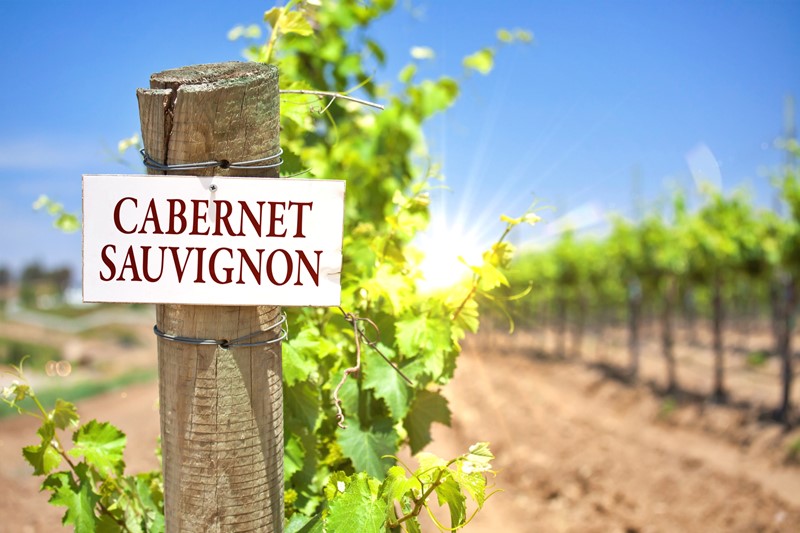Cabernet Sauvignon: the king of red grapes
A Journey through the history, characteristics, and global influence of Cabernet Sauvignon

The illustrious journey of Cabernet Sauvignon, widely acclaimed as the world's most renowned red grape variety, epitomizes the quintessence of red wine excellence. Often paralleled with Chardonnay in the realm of white wines, Cabernet Sauvignon, though constituting a mere 5% of the global vineyard expanse - approximately 340,000 hectares out of 6.8 million - reigns supreme in the pantheon of prestigious and sought-after wine labels.
Originating from Bordeaux, France, Cabernet Sauvignon has traversed centuries and continents, finding a home in regions as diverse as California, Australia, South Africa, and Spain. This article delves into the grape's distinctive features, the wines it yields, and its historical evolution and global spread.
Historical Roots and Evolution
Believed to be a natural hybrid of Cabernet Franc and Sauvignon Blanc, Cabernet Sauvignon's emergence in the 17th century in Bordeaux marked the beginning of its storied history. It gained immense prestige over a century and a half ago with the establishment of the Grand Cru Classé, a classification system devised by Napoleon III in 1855 during the Paris International Exposition. Today, Bordeaux's vineyards are predominantly Cabernet Sauvignon, covering nearly 80% of the area.
The late 18th century saw a surge in its cultivation, subsequently leading to its widespread global adoption, thriving in various terrains and climates.
Characteristics of the Grape
Known for its vigor, Cabernet Sauvignon has a medium to late budding season. The grape is characterized by small, spherical, dark blue berries with thick, disease-resistant skins, ideal for producing concentrated wines. The clusters are compact, contributing to the grape's robust nature.
Cabernet Sauvignon flourishes in temperate, dry climates, yet shows remarkable adaptability to a range of terroirs worldwide, including Italy, the United States, Australia, Chile, and Argentina. Its versatility and resilience have earned it the moniker of a "colonizing grape," often replacing local varieties in many wine regions. The grape's high tannin content is a hallmark, fostering longevity in the wines it produces.
Global Production
As of 2020, key producers of Cabernet Sauvignon include France, the United States, Australia, Italy, and Spain, each bringing unique characteristics to their wines.
- United States: California leads in the U.S. with about 100,000 hectares of Cabernet Sauvignon vineyards.
- France: The grape's birthplace, France, especially Bordeaux, devotes a significant area to Cabernet Sauvignon, with approximately 55,000 hectares.
- Chile: As the principal producer in Latin America, Chile boasts 42,500 hectares.
- Australia: Australia marks its presence with around 34,000 hectares.
- Italy: Known for other varieties, Italy also contributes significantly with about 28,000 hectares.
- Spain: Though lesser in comparison, Spain's 16,000 hectares mark it as an important producer.
Cabernet Sauvignon Wine Profile
Cabernet Sauvignon wines are celebrated for their depth and structure. They exhibit a deep, almost opaque color, with a complex bouquet of red and black fruits like currants and cherries, often complemented by pepper, tobacco, or chocolate notes. On the palate, these wines are powerful, full-bodied, with balanced acidity and a lingering finish. The high tannin content lends structure and longevity, making them suitable for barrel aging and bottle evolution.
Notably, Cabernet Sauvignon wines age gracefully, developing more intricate flavors and aromas over time, thanks to the grape's high tannin levels. These wines pair exceptionally well with red meats, game, and aged cheeses, harmonizing with bold and complex flavors.
Founded in 2007, Vinetur® is a registered trademark of VGSC S.L. with a long history in the wine industry.
VGSC, S.L. with VAT number B70255591 is a spanish company legally registered in the Commercial Register of the city of Santiago de Compostela, with registration number: Bulletin 181, Reference 356049 in Volume 13, Page 107, Section 6, Sheet 45028, Entry 2.
Email: [email protected]
Headquarters and offices located in Vilagarcia de Arousa, Spain.